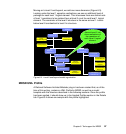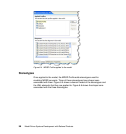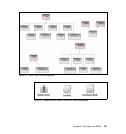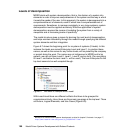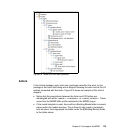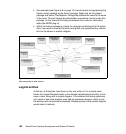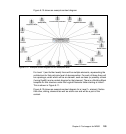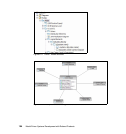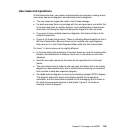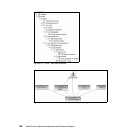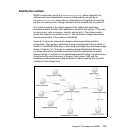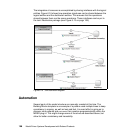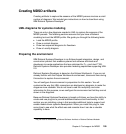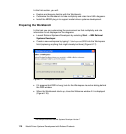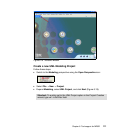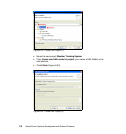Chapter 6. Tool support for MDSD 105
Use cases and operations
At the Enterprise level, use cases are discovered and analyzed, creating actors,
use cases, sequence diagrams, and optionally activity diagrams:
The use cases are organized under a Use Cases package.
For each use case there is a package with the use case name, and within that
is the use case itself, an activity diagram, and a collaboration containing an
interaction containing the black-box sequence diagram for that use case.
If you want to have multiple sequence diagrams, then there will have to be
multiple interactions.
Figure 6-13 shows this structure. There is a Building Block template for this in
the Use Cases folder. Because there can be multiple use case diagrams,
these are put in a Use Case Diagrams folder within the Use Cases folder.
For Level 1+ the structure can be slightly different:
In the case where the operations at the level above are used for analyzing the
behavior and distribution of behavior, there are no use cases or use case
diagrams.
Here the use case names are the same as the operations from the level
above.
The sub-structure has a folder for the use case, and within that is an activity
diagram (as described above), and a collaboration containing an interaction
that contains a white-box sequence diagram.
An added optional diagram is a view of participating classes (VOPC) diagram.
This diagram shows the actors and classes needed for the operation
realization, and the associations needed for the messaging that is shown in
the white-box sequence diagram to take place. Figure 6-14 shows an
example of such a diagram.



